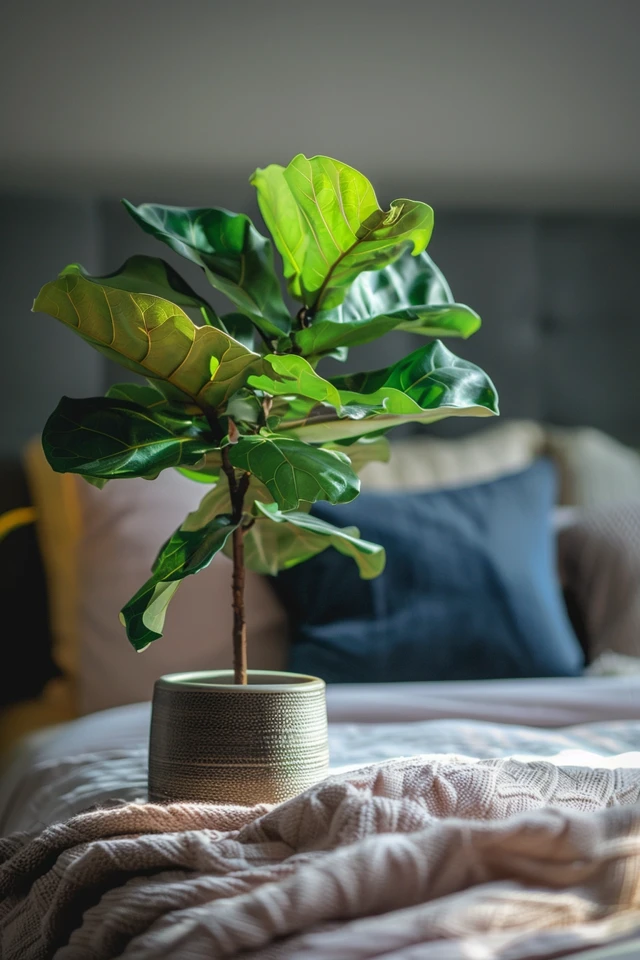If you’re a plant lover like me, you know how devastating it can be to discover root rot in your beloved fiddle leaf fig. Root rot is a common problem that occurs when the roots of the plant become suffocated due to overwatering. This excessive moisture in the soil leads to the roots decaying and can ultimately be fatal for your plant if not treated quickly.
Don’t worry, though! I’m here to guide you through the process of fixing root rot and helping your fiddle leaf fig make a full recovery. By taking the following steps, you’ll have your plant thriving in no time.
Key Takeaways:
- Root rot is a common problem caused by overwatering in fiddle leaf fig plants.
- Signs of root rot include brown spots on the leaves that spread and cause leaf drop.
- Acting quickly is essential to save your plant from the effects of root rot.
- Remove affected roots, repot with well-draining soil, and provide the right amount of light and water to aid plant recovery.
- Preventing root rot involves proper watering, choosing the right pot and soil, and providing adequate light.

Preventing Root Rot in Fiddle Leaf Figs
Prevention is key when it comes to maintaining the health of your fiddle leaf fig and preventing root rot. By following a few simple practices, you can ensure that your plant thrives and avoids this common issue.
1. Proper Watering Techniques
The most important step in preventing root rot is ensuring that you water your fiddle leaf fig correctly. Overwatering is the primary cause of root rot, so it’s crucial to strike the right balance. Allow the top layer of soil to dry out between waterings, and make sure the pot has adequate drainage to prevent water from sitting in the bottom.
2. Choosing the Right Soil
Use a well-draining soil mix specifically formulated for indoor plants. Avoid heavy garden soils or those that retain excessive moisture. A good soil mix will allow excess water to drain away, keeping the roots free from excess moisture.
3. Selecting the Proper Pot
Choose a pot with drainage holes to ensure that water can flow freely and prevent water from pooling at the bottom. Additionally, select a pot size that allows for adequate root growth without being too large. A pot that is too big can hold excess moisture and increase the risk of root rot.

4. Providing Adequate Light
Fiddle leaf figs require bright, indirect light to thrive. Placing your plant near a window where it receives plenty of natural light will help prevent overwatering, as the soil will dry out more effectively. However, be cautious of direct sunlight, as it can scorch the leaves.
5. Regular Inspections
Keep a close eye on your fiddle leaf fig for any signs of stress or disease. Check the leaves regularly for discoloration or wilting, which may indicate root rot or other issues. Promptly address any problems you notice to prevent them from worsening.
By taking these preventive measures, you can ensure the health and longevity of your fiddle leaf fig plant. Remember that prevention is always easier than cure when it comes to root rot, so it’s important to establish good habits from the start. Following these guidelines will help keep your fiddle leaf fig thriving and free from root rot.

Conclusion
Root rot can be a serious problem for fiddle leaf fig plants, but with prompt action and proper care, the plant can recover. By recognizing the signs of root rot, removing affected roots, repotting with good drainage, and providing the right amount of light and water, the fiddle leaf fig can make a full recovery.
Additionally, following preventive measures such as proper watering, choosing the right pot and soil, and providing adequate light can help prevent future cases of root rot. By creating a favorable environment for your fiddle leaf fig, you can minimize the risk of root rot and ensure the long-term health and beauty of your plant.
Remember, a healthy fiddle leaf fig is a happy fiddle leaf fig. By implementing these solutions and practicing good care habits, you can have a thriving plant that will impress with its lush foliage and vibrant growth for years to come.

